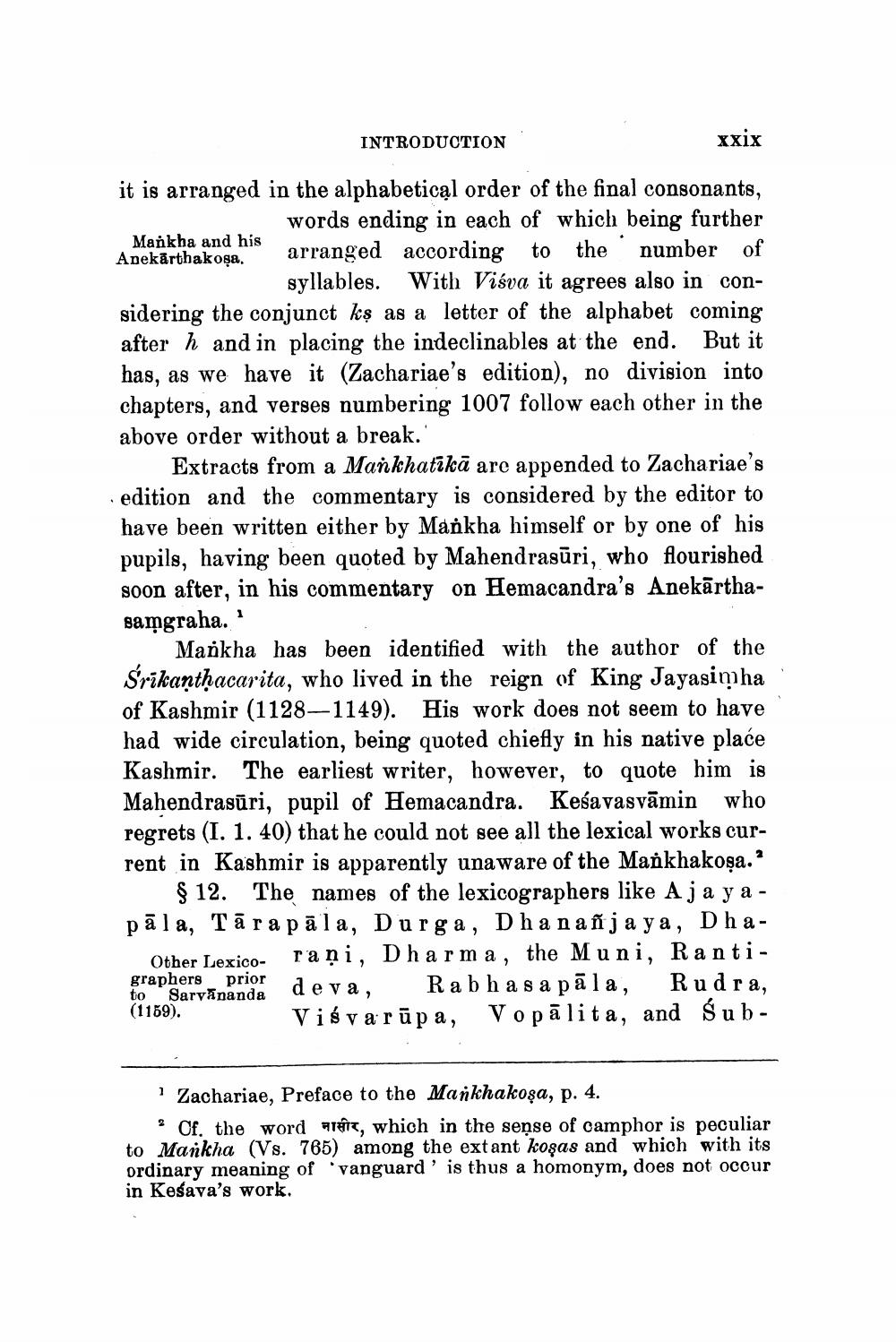________________
INTRODUCTION
xxix
it is arranged in the alphabetical order of the final consonants,
words ending in each of which being further Mankha and his Anekārthakoga. arranged according to the number of
syllables. With Viśva it agrees also in considering the conjunct kş as a letter of the alphabet coming after h and in placing the indeclinables at the end. But it has, as we have it (Zachariae's edition), no division into chapters, and verses numbering 1007 follow each other in the above order without a break.'
Extracts from a Mankhatīkā are appended to Zachariae's edition and the commentary is considered by the editor to have been written either by Mankha himself or by one of his pupils, having been quoted by Mahendrasūri, who flourished soon after, in his commentary on Hemacandra's Anekārthasamgraha.
Mankha has been identified with the author of the Srikanthacarita, who lived in the reign of King Jayasimha of Kashmir (1128—1149). His work does not seem to have had wide circulation, being quoted chiefly in his native plaće Kashmir. The earliest writer, however, to quote him is Mahendrasūri, pupil of Hemacandra. Keśavasvāmin who regrets (I. 1. 40) that he could not see all the lexical works current in Kashmir is apparently unaware of the Mankhakosa."
$ 12. The names of the lexicographers like A ja y apāla, Tāra pāla, Durga, Dhan añj a ya, Dha
Other Lexico- rani, Dharma, the Muni, Rantigraphers prior a. to Sarvānanda deva, Rab has a pāla, Rudra, (1159).
Viś v arūpa, Vopālita, and śub
Zachariae, Preface to the Markhakoşa, p. 4.
Cf. the word agt, which in the sense of camphor is peculiar to Mankha (Vs. 765) among the extant koşas and which with its ordinary meaning of 'vanguard' is thus a homonym, does not occur in Kesava's work.




